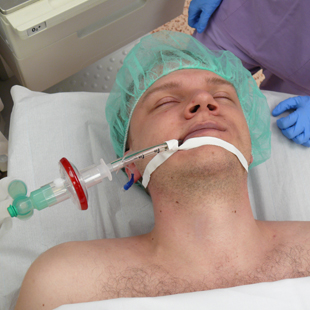Laryngospasm
Laryngospasm is an acute life-threatening condition caused by reflex closure of the rima glotidis by the vocal cords. Presence of saliva, blood, stomach contents, supraglottic airway device and manipulation with laryngoscope in the hypopharynx in state of partial consciousness may contribute to the development of this condition. Laryngospasm occurs more often in children, young adults or in obese people during extubation procedure when the patient is not yet fully recovered from general anaesthesia. The following algorithm introduces a recommended management of severe laryngospasm.
Review
The presented educational algorithm is a transparent, axial "cookbook" for solution of sudden laryngospasm in uncomplicated patient after surgery. Description of the situation and offered solutions are appropriate part of the algorithm together with the values of the monitored functions (SpO2, ECG, NIBP, RR), which emphasize the seriousness of the patient´s condition. Directness and simplicity and classification of individual steps in the whole clinical situation ensure easy comprehension and memorability of each phase of treatment. However it should be noted, that the incidence of laryngospasm is not strictly bound only to the submitted clinical situation. Generally, it is a protective and defensive mechanism that ensures closure airway against aspiration. So ultimately there are several situations where it is possible to occur. Its solution, however, remains the same or similar.
Sources
MÁLEK, Jiří. Praktická anesteziologie. Praha: Grada, 2011. ISBN 978-80-247-3642-6. Dostupné také z: https://www.bookport.cz/kniha/prakticka-anesteziologie-1962/





